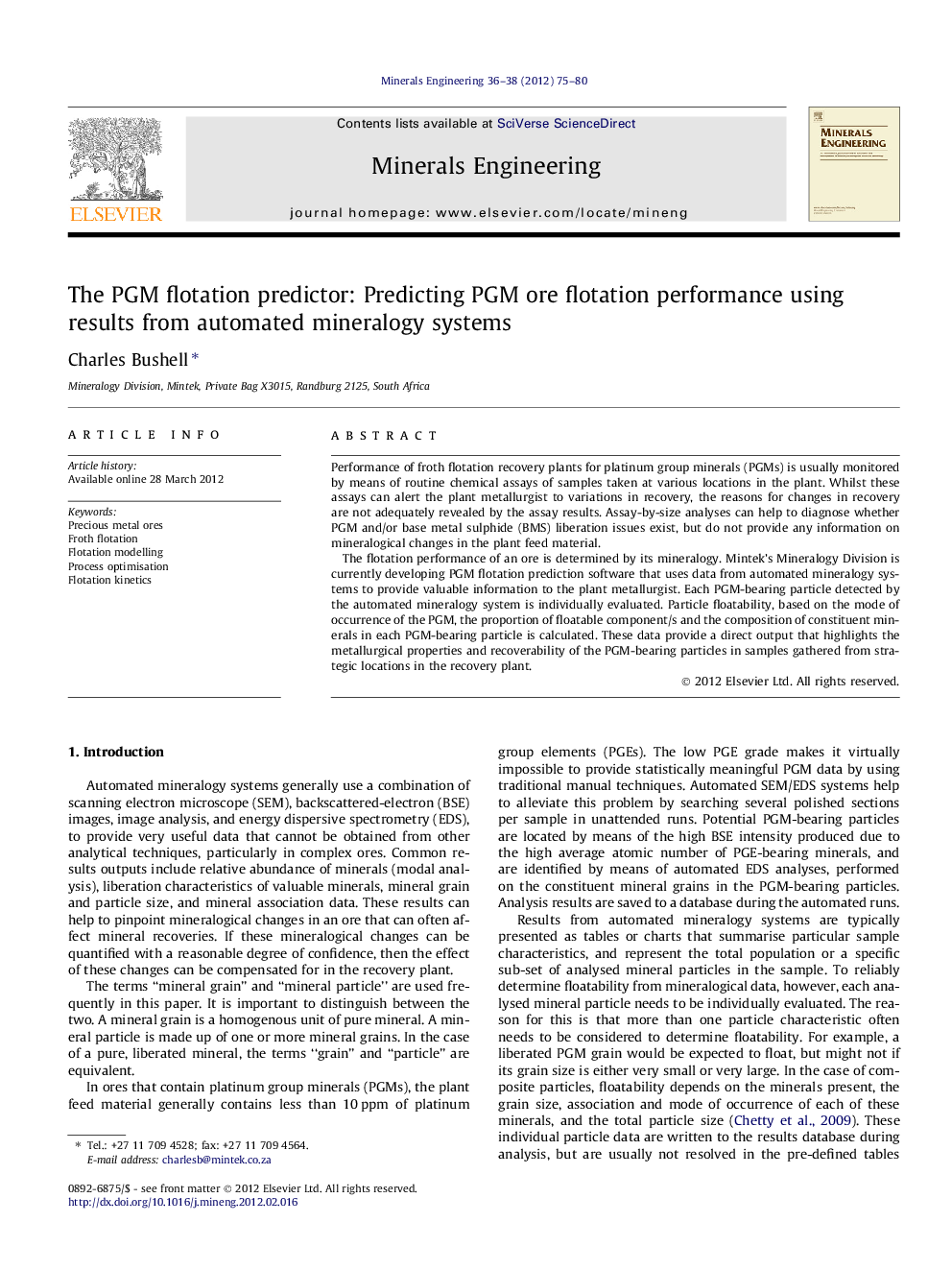| Article ID | Journal | Published Year | Pages | File Type |
|---|---|---|---|---|
| 233521 | Minerals Engineering | 2012 | 6 Pages |
Performance of froth flotation recovery plants for platinum group minerals (PGMs) is usually monitored by means of routine chemical assays of samples taken at various locations in the plant. Whilst these assays can alert the plant metallurgist to variations in recovery, the reasons for changes in recovery are not adequately revealed by the assay results. Assay-by-size analyses can help to diagnose whether PGM and/or base metal sulphide (BMS) liberation issues exist, but do not provide any information on mineralogical changes in the plant feed material.The flotation performance of an ore is determined by its mineralogy. Mintek’s Mineralogy Division is currently developing PGM flotation prediction software that uses data from automated mineralogy systems to provide valuable information to the plant metallurgist. Each PGM-bearing particle detected by the automated mineralogy system is individually evaluated. Particle floatability, based on the mode of occurrence of the PGM, the proportion of floatable component/s and the composition of constituent minerals in each PGM-bearing particle is calculated. These data provide a direct output that highlights the metallurgical properties and recoverability of the PGM-bearing particles in samples gathered from strategic locations in the recovery plant.
Graphical abstractFigure optionsDownload full-size imageDownload as PowerPoint slideHighlights► Potential PGM recovery can be predicted from automated SEM results. ► A method to produce a recovery profile from mineralogical data has been developed. ► PGM flotation prediction via mineralogy compares well to flotation rate test data. ► The flotation predictor output can be used for plant monitoring and troubleshooting.
